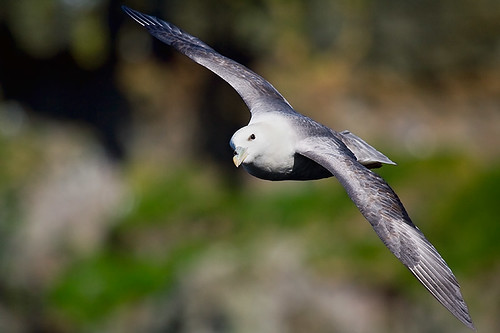Right, a quick primer on exposure, shutter speed and aperture.
The ides when setting your shutter speed and aperture is to allow the right number of photons of light to hit the sensor (or film!). If you allow more photons to hit the sensor by allowing the shutter to stay open longer, then you need to compensate for this by making the hole through which they pass smaller. Or of you make the hole bigger then you need to compensate for this by leaving the shutter open for a much shorter time.
So as far as letting less light in by using a smaller aperture ... this has to be balanced out by using a longer shutter speed. So when choosing a smaller aperture, you aren't choosing it because it lets in less light but because it has some other effect. Similarly, when choosing either a fast or a slow shutter speed, you aren't doing this because of the effect it has on the exposure, but because of some other effect that the shutter speed has.
So:
Small aperture - large depth of field
Big aperture - narrow depth of field
Slow shutter speed - records motion as a blur
Fast shutter speed - "freezes" motion.
I've already shown you examples above where I used aperture to achieve an effect. These next two photos show where shutter speed have different effects:
Here a fast shutter speed was required to freeze the bird (an incidentally to achieve the high shutter speed I needed to shoot wide open thus giving a limited depth of field!)

In contrast, in this image a slow shutter speed was used to allow the water to appear more natural.

Oh, and thank you for your comment on website, very kind of you.
The ides when setting your shutter speed and aperture is to allow the right number of photons of light to hit the sensor (or film!). If you allow more photons to hit the sensor by allowing the shutter to stay open longer, then you need to compensate for this by making the hole through which they pass smaller. Or of you make the hole bigger then you need to compensate for this by leaving the shutter open for a much shorter time.
So as far as letting less light in by using a smaller aperture ... this has to be balanced out by using a longer shutter speed. So when choosing a smaller aperture, you aren't choosing it because it lets in less light but because it has some other effect. Similarly, when choosing either a fast or a slow shutter speed, you aren't doing this because of the effect it has on the exposure, but because of some other effect that the shutter speed has.
So:
Small aperture - large depth of field
Big aperture - narrow depth of field
Slow shutter speed - records motion as a blur
Fast shutter speed - "freezes" motion.
I've already shown you examples above where I used aperture to achieve an effect. These next two photos show where shutter speed have different effects:
Here a fast shutter speed was required to freeze the bird (an incidentally to achieve the high shutter speed I needed to shoot wide open thus giving a limited depth of field!)

In contrast, in this image a slow shutter speed was used to allow the water to appear more natural.

Oh, and thank you for your comment on website, very kind of you.
